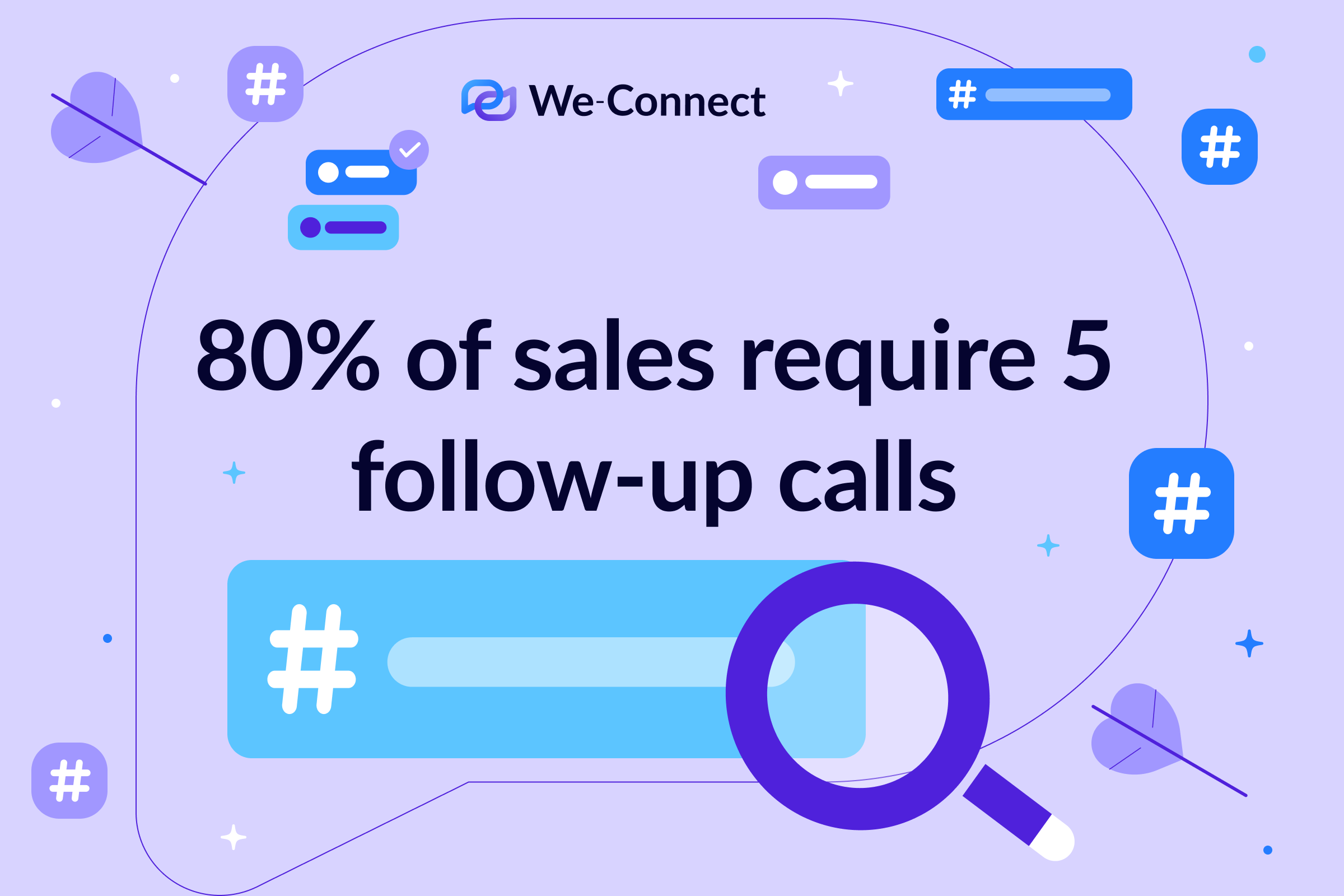The power of persuasion in sales is undeniable. Just think about a user car salesperson – how do they get customers? Persuasion. Sure, you’re probably not a used car salesperson (although if you are, no worries), but persuasion still relates. This blog post will explore how you can master persuasion in sales to close more deals. Now, let’s dive into it:
Table of Contents
What Pushes Someone To Purchase a Product?
To become a persuasive salesperson, it’s essential to understand the psychology behind why people buy something. Frankly, there are a lot of reasons people make decisions, but here are some of the most common:
- Reciprocity: Reciprocity is the concept of giving and receiving. By offering something of value upfront, you create a sense of indebtedness in your prospects – increasing the likelihood of them reciprocating by making a purchase.
- Social Proof: Social proof refers to the influence of others on our decision-making. By showcasing positive customer reviews, testimonials, and case studies, you provide social proof that your product or service is trusted and valued by others.
- Scarcity: Scarcity involves creating a perception of limited availability. By highlighting scarcity through limited quantities or time-limited offers, you evoke fear of missing out, motivating prospects to take action.
- Building Rapport: Establishing genuine connections with prospects is vital for building rapport and trust. By actively listening, practicing empathetic communication, and leveraging storytelling techniques, you can create emotional connections that resonate with your potential customers. This foundation of trust can significantly enhance your persuasive abilities.
- Active Listening: Active listening involves fully focusing on and understanding the prospect’s needs, concerns, and preferences. It shows respect, builds trust, and allows you to tailor your persuasive message to their situation.
- Empathetic Communication: Empathetic communication involves understanding and sharing the emotions and experiences of your prospects. By showing empathy, you create a connection and demonstrate that you genuinely care about their needs and desires.
- Persuasion: Storytelling is a powerful tool for persuasion. By crafting narratives that resonate with your prospects, you create relatable scenarios, evoke emotions, and provide real-life examples of how your product or service can positively impact their lives.
We covered the psychology of decision-making in an entire blog post. So, if you want to learn more, you can right here!

Persuasion Through Understanding
A deep understanding of your target market is crucial for persuasive sales. Just think about it, how can you sell something to someone you don’t even know… By aligning your pitch with your customer’s specific needs, you increase your chances of persuading them effectively.
- Market Research: Effective market research involves gathering insights about your target audience’s demographics, preferences, and behaviors. It helps you understand their pain points, desires, and buying habits, enabling you to tailor your persuasive approach accordingly.
- Identifying Pain Points: Identifying and addressing your customers’ pain points is a key aspect of persuasion. By understanding their challenges and offering solutions that alleviate their pain, you position yourself as a valuable problem solver and increase your persuasive impact.
- Tailoring Your Message: One size doesn’t fit all regarding persuasion. Tailoring your message to your audience ensures that it resonates with their specific needs and desires. Speaking their language and addressing their concerns establishes relevance and builds a stronger persuasive case.
Take it one step further by creating your very own buyer persona. Learn more here!

Learn To Nail Your Value Proposition
Crafting a compelling and unique value proposition is just another key aspect of persuasion. This one is pretty simple. How can you sell your product if you don’t have the perfect pitch lined up? We always recommend supporting your value proposition with data, testimonials, and case studies to enhance your persuasive message and build credibility. Here are some tips:
- Communicating Benefits: It’s obvious, but communicating the benefits of your product is the most important part of your value proposition. Focus on the outcomes and positive impact of your product to be more persuasive.
- Supporting Evidence: To strengthen your value proposition, providing supporting evidence is essential. This can include statistical data, research findings, testimonials from satisfied customers, and case studies showcasing real-world results of your product or service.
- Uniqueness and Differentiation: In a competitive marketplace, highlighting what sets your offering apart is crucial. Emphasize unique features, proprietary technology, exceptional customer service, or any other aspect distinguishing your product or service from the competition.
How Can You Overcome Objections?
Objections are common in all types of sales. However, when dealing with higher-priced products specifically, your customers may be less willing to pull the plug and buy your product. By anticipating common objections, reframing them as opportunities, and providing evidence and testimonials to counter them, you can alleviate potential concerns and build trust with your prospects.
- Anticipating Objections: You can anticipate objections in advance by putting yourself in your prospects’ shoes and understanding their potential concerns. This allows you to be prepared with persuasive responses that proactively address your doubts and hesitations.
- Reframing Objections: Rather than viewing objections as roadblocks, see them as opportunities for further persuasion. You can turn objections into selling points by reframing objections and demonstrating how your product or service can overcome them or provide added value.
- Providing Evidence and Testimonials: Supporting your claims with tangible evidence and testimonials from satisfied customers is a powerful way to overcome objections. Providing social proof through real-life experiences and positive feedback boosts confidence in your offering and reduces skepticism.

Creating a Sense of Urgency
Creating a sense of urgency in your sales interactions can propel potential customers to take action. This works great with limited-time offers, specifically in your call-to-actions. Here’s some more info:
- Scarcity and Limited Availability: Creating a perception of scarcity is a great way to get your customer to take action. The fear of missing out can be a powerful motivator that prompts them to make a buying decision sooner rather than later.
- Consequences of Inaction: Communicating the potential negative outcomes or missed opportunities arising from inaction can create a sense of urgency. By highlighting the cost of not taking action, you motivate prospects to act now rather than later.
- Exclusive Deals and Bonuses: Offering exclusive deals or bonuses for immediate action adds more persuasion. You enhance the perceived benefits of choosing your product or service by providing additional value or incentives for those who make a prompt decision.
The Art of Persuasive Language
Persuasive language works wonders as well. Even if you’re not a keyboard ninja or expert-level copywriter, you can still try your best to use persuasive language. Here’s what we recommend:
- Power Words: Power words are emotionally charged words that evoke strong reactions and create a sense of urgency or desire. Incorporating powerful words in your sales pitch can captivate your audience and increase the persuasive impact of your message.
- Positive Framing: Positive framing involves presenting your product or service positively, focusing on the benefits rather than the drawbacks. You enhance the persuasive appeal and overcome resistance by emphasizing the positive aspects and potential gains.
- Storytelling and Metaphors: Storytelling and metaphors are powerful tools for persuasion. By creating compelling narratives and using relatable metaphors, you engage your audience emotionally, making your message more memorable and persuasive.
- Incorporating Social Proof: Social proof, such as testimonials and case studies, provides evidence of the positive experiences others have had with your product or service. Including social proof in your sales pitch builds credibility and reinforces the persuasive impact of your message.
Continue To Build Credibility
You’ve got to face it. Most people purchase products that are better reviewed (and with more social proof) than those without. That’s why we keep saying how important testimonials are! But that’s not the only way to build credibility with your audience. Here’s what else we recommend:
- Highlighting Expertise and Experience: Showcasing your expertise and experience in your industry or field establishes credibility and positions you as a trusted authority. You enhance your persuasive influence by highlighting relevant qualifications, certifications, or years of experience.
- Success Stories and Case Studies: Sharing success stories and case studies of how your product or service has benefited previous customers provide tangible evidence of your capabilities. Highlighting real-life examples of positive outcomes strengthens your persuasive message and builds trust.
- Endorsements and Partnerships: Endorsements from respected individuals or partnerships with reputable brands can significantly enhance your credibility. When prospects see that others trust and endorse your offering, they are more likely to be persuaded by your message and consider your product or service a reliable choice.

Conclusion
You might not be a master of persuasion yet, but we certainly hope that you’ve learned a few tips and tricks. Don’t forget that, above everything, persuasion should be used ethically. A few extra sales aren’t worth it if it means potentially a bad reputation in the future.
Of course, you can read more articles just like this here are We-Connect.
